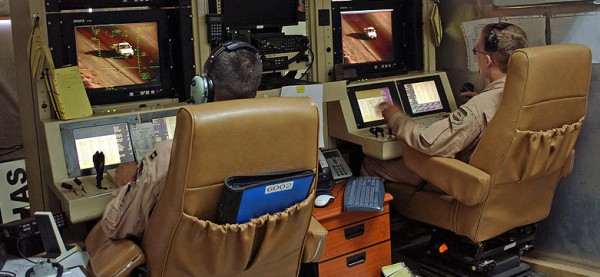
Tom Engelhardt reflects on the detachment with which the US military, operating from a position akin to that of Olympian gods, has turned people into targets:
[I]n the cities, towns, and villages of the distant lands where Americans tend to make war, civilians die regularly and repeatedly at our hands. Each death may contain its own uniquely nightmarish details, but the overall story remains remarkably repetitious. Such “incidents” are completely predictable. Even General McChrystal, determined to “protect the population” in Afghanistan as part of his counterinsurgency war, has proven remarkably incapable of changing the nature of our style of warfare. Curtail air strikes, rein in Special Operations night attacks — none of it will, in the long run, matter. Put in a nutshell: If you arrive from the heavens, they will die.
Having watched the video of the death of the 22-year-old Reuters photographer Namir Noor-Eldeen in that July 2007 video, his father said: “At last the truth has been revealed, and I’m satisfied God revealed the truth… If such an incident took place in America, even if an animal were killed like this, what would they do?”
Putting aside the controversy during the 2008 presidential campaign over the hunting of wolves from helicopters in Alaska, Noor-Eldeen may not have gone far enough. For that helicopter crew, his son was indeed the wartime equivalent of a hunted animal. An article on the front page of the New York Times recently captured this perspective, however inadvertently, when, speaking of the CIA’s aerial war over Pakistan’s tribal borderlands, it described the Agency’s unmanned drones as “observing and tracking targets, then unleashing missiles on their quarry.”
“Quarry” has quite a straightforward definition: “a hunted animal; prey.” Indeed, the al-Qaeda leaders, Taliban militants, and local civilians in the region are all “prey” which, of course, makes us the predators. That the majority of drones cruising those skies 24/7 and repeatedly launching their Hellfire missiles are named “Predators” should, then, come as no surprise.
Americans are unused to being the prey in war and so essentially incapable of imagining what that actually means, day in, day out, year after year. We prefer to think of their deaths as so many accidents or mistakes — “collateral damage” — when they are the norm, not the exception, not what’s collateral in such wars. We prefer to imagine ourselves bringing the best (of values and intentions) to a backward, ignorant world and so invariably make ourselves sound far kindlier than we are. Like the gods of Olympus, we have a tendency to flatter ourselves, even as we continually remake the “rules of engagement,” those ROEs, to suit our changing tastes and needs, while creating a language of war that suits our tender sensibilities about ourselves.
In this way, for instance, assassination-by-drone has become an ever more central part of the Obama administration’s foreign and war policy, and yet the word “assassination” — with all its negative implications, legal and otherwise — has been displaced by the far more anodyne, more bureaucratic “targeted killing.” In a sense, in fact, what “enhanced interrogation techniques” (aka torture) were to the Bush administration, “targeted killing” is to the Obama administration.

